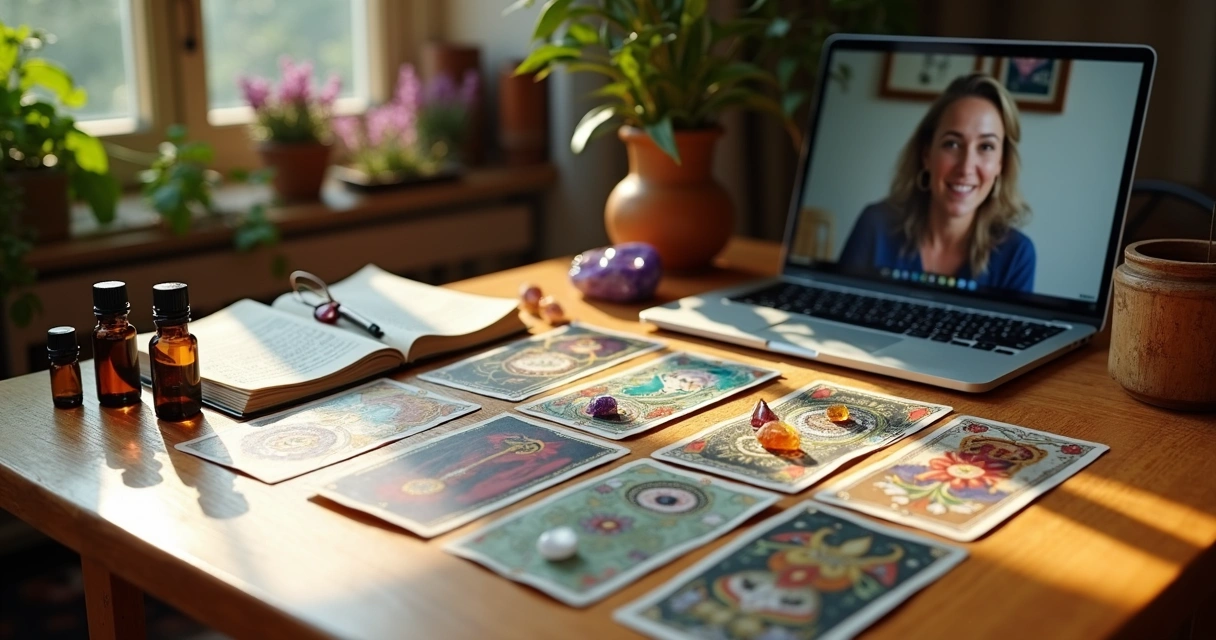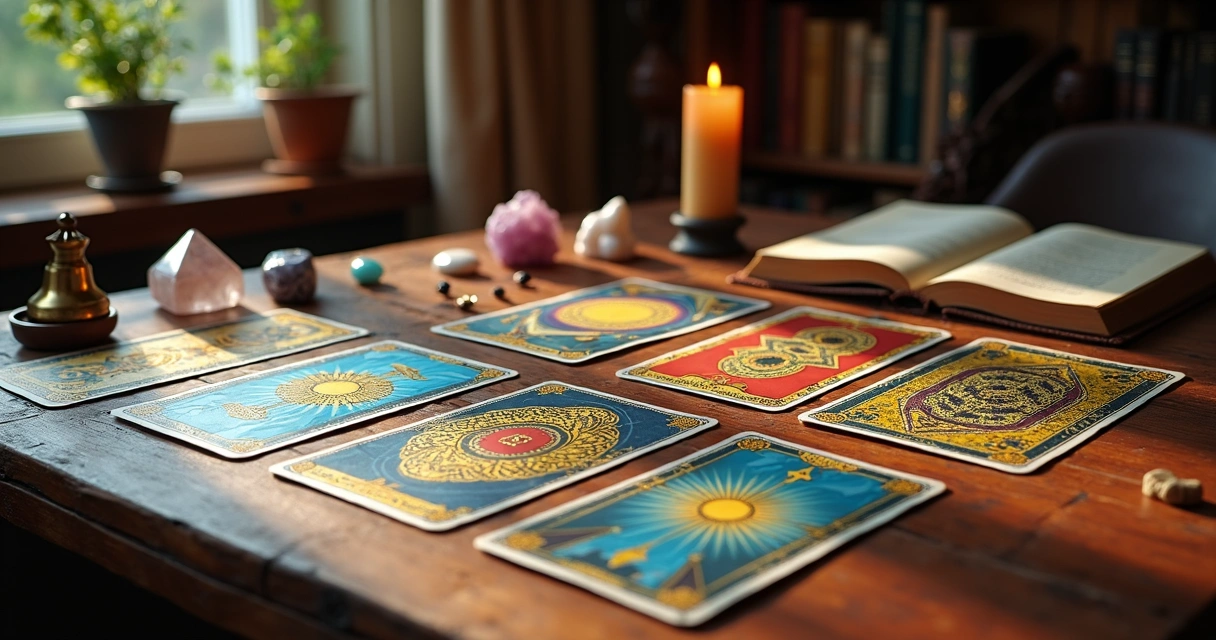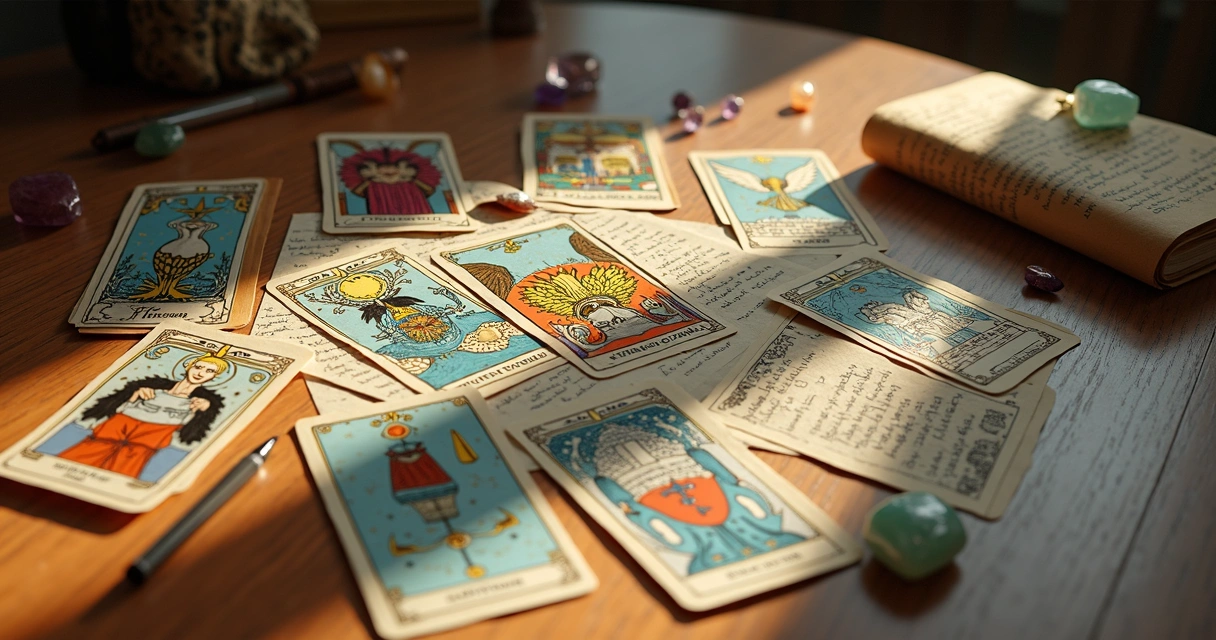Starting a tarot reading business feels part adventure, part leap of faith, and part late-night pondering (maybe with a cup of tea). If you're holding a deck for the first time or staring at your bookshelf full of guidebooks, wondering how to go from hobbyist to professional, you’re in the right place. This guide is for anyone ready to make tarot not just a daily practice, but a source of income and connection. We'll cover every step, from practical concerns to the subtle nerves that most of us don’t like to talk about much.
The first decision: making tarot your work
Choosing to read tarot professionally isn’t one perfect moment. It usually starts quietly. Maybe a friend paid you for a reading, or someone said, “You should do this for work!” At the heart, it’s about listening to that nudge—then gently testing if it’s a good fit for your life.
Settling the big question
Should you quit your job and become a full-time tarot reader? Probably not right away. Most successful readers blend tarot with other work, at least for a while. According to a business plan template and market analysis, building a regular client base takes time, patience, and—let’s be realistic—some days when no one books a reading.
It’s less about a radical switch, more about growing what’s already there.
Your relationship with the deck
Before you take clients, get comfortable with your tarot deck. Shuffling, drawing, and, most importantly, cutting the deck. Cutting the deck is one of those rituals that might seem fixed, but actually, it's deeply personal. There’s no rule for how you must cut: some use left hands, others cut into three, while a few don't cut at all, just shuffle and draw. The secret? See what feels right. Try different methods. Notice what resonates.
Your way is the right way, as long as it opens your intuition.
Mix it up until you find a ritual that centers you. Over time, your clients will notice the confidence and flow in your sessions.
Preparing to call yourself a professional
People often wonder, “When am I ready? How much should I know?” It’s a fair worry. Most beginners don’t feel ‘ready’ for months—or years! If you’re waiting for a magic sign, you might be waiting forever. There are a few practical milestones, though, that help mark your path:
- You can interpret all 78 cards (even if briefly!) without a guidebook.
- You have read for friends, family, or peers and handled at least a handful of real questions—love, career, life’s confusion.
- You’ve practiced cutting, shuffling, and spreading cards in a way that feels almost automatic.
- You’re open about what you know and willing to say, “Let me check that,” if you’re unsure.
Following a structured study plan can help you set small, achievable goals. It also reminds you that it’s OK to start reading for others before you feel ‘expert’.
Growth happens in real conversations. You’ll learn the most by doing.
 The first clients: insecurities, confidence, and connection
The first clients: insecurities, confidence, and connection
Almost nobody feels completely ready for their very first paid reading. You might be thinking, “What if I mess up?” or “What if someone asks me a question and I blank?” These nerves are universal. They fade only when you start connecting with real people, not in endless study.
- Normalize doubt. Every tarot reader, even those who’ve read for decades, has moments of uncertainty. Accept it.
- Practice collaboration. A tarot consultation isn’t just about ‘performing’ for the client. It's a back-and-forth. Ask questions. Pause when you need. Make your sessions into a gentle conversation, not a test.
- Grow with every reading. Each session teaches you something. Welcome feedback, note what felt smooth, and what could be improved.
Some readers (perhaps you?) find a little self-support ritual can ground them. Burn a favorite incense. Hold a crystal. Dab a bit of essential oil on your wrists, if the scent helps you focus. These natural elements aren’t just ‘mystical’—they make the space yours, giving you small anchors you can come back to.
A little ritual can work wonders on nerves.
Then, there’s MysticLog. With its features for tracking readings and organizing each client, many have found it helps ease early anxieties about remembering details, or about building a sense of progress.
Should you offer consultations online?
Absolutely—if you want flexibility, wider access to clients, and a chance to shape your own routine. Today, most new readers find their first paying clients through the internet. Yet, be cautious. Many third-party platforms can feel impersonal, or take large commissions, leaving you with little control. It’s all too easy to get lost among dozens of other profiles.
Instead, consider creating your own schedule and client relationships:
- Offer sessions through your own website or social accounts, where you control the process and presentation.
- Set your own boundaries regarding hours, types of readings, and rates.
- Communicate directly with your clients. This builds loyalty and helps learning.
This approach is reinforced by guides about starting an online tarot business—they all note the bigger payoff and long-term connections that come from building something personal, not borrowed.
 Promoting yourself: the art of gentle marketing
Promoting yourself: the art of gentle marketing
Marketing your tarot business isn’t about shouting the loudest or making wild promises. It’s about quietly showing who you are, and inviting others to connect. Social media is a great ally here, but only if you stay authentic.
Some gentle strategies from the list of marketing ideas for tarot businesses include:
- Share a card of the day and a small reflection—simple, honest, not ‘salesy’.
- Tell stories about your journey, including early mistakes. People want realness.
- Respond to followers’ questions, sparking conversation about tarot meanings and practices.
- Occasionally offer a free mini-reading or Q&A to build trust with your audience.
- Use photos of your reading space or favorite decks so clients begin to feel at home with you, even before a session.
Tailor your posts and language to your audience. Some people love lots of mystical language, while others prefer something grounded and practical. Test, notice reactions, and adjust—just don’t lose your own voice in the process.
Authenticity makes the best first impression.
Timelines, training, and permission to start
Curious how long it takes to go from curious to pro? The answer is honestly “it varies.” Some spend six months, others several years. What matters is that you:
- Commit to a structured study plan (maybe two or three hours weekly).
- Read for real people as soon as possible—friends, strangers on forums, anyone curious!
- Start charging when your feedback moves from “this felt random” to “I found real value in your insights.”
- Keep learning, keep reading, keep humbling yourself to the practice!
You don’t have to know everything before you start. Clients aren’t seeking perfection—they want connection and care.
Pricing: how much should you charge?
Now for that question everyone dreads... “What do I charge?” It’s tricky, for sure. Don’t undervalue yourself, but also don’t stress if your early prices feel lower than you’d like. According to guides on starting fortune-telling businesses, and based on general market data, new tarot readers often begin charging 80-100 reais for an hour session (which is roughly $16-$20 USD as of this writing).
It’s okay to start small. Adjust as you grow.
As you build experience and gain loyal clients, increase your rates. Track the time you spend, the energy readings take, and any running costs (decks, candles, software, room rent). It’s normal to adjust your fee every few months at first, until you find a spot that feels fair both for you and your audience.
MysticLog can help track your sessions, client notes, and financials—so you’ll know, month by month, where your business stands.
Natural magic: building a reading space you love
Creating a welcoming, magical space for readings is easier than you think. You don’t need a separate room or elaborate altar—just a few thoughtful touches that feel special and grounding.
- Light a candle or two before sessions, making a small ritual of arrival.
- Place crystals—like amethyst or quartz—on your reading table. Pick stones that make you feel at ease.
- Dab a calming essential oil on your pulse points, or spritz a gentle mist in the air. Scents like lavender or rosemary work wonders.
- Arrange your deck, a notebook, and maybe a cup of herbal tea nearby. Routine brings confidence.
Natural magic isn’t about impressing anyone, but about creating a safe, inspiring space for both you and your querent. These little touches can also serve as cues, helping you transition into reading mode even on hectic days.
 Building your new business—step by step
Building your new business—step by step
Growing a tarot reading business is just that—a process. It’s not a straight line. Most readers start slow, balancing part-time clients with other work. Over time, the network grows: one client brings another, a workshop leads to three new sessions, a long-ago acolyte suddenly returns for advice.
According to national salary studies, the average tarot reader in the U.S. makes about $45,000 per year, but earnings vary wildly. In larger cities and with an established reputation, some earn far more. Keep in mind local realities, taxes, and cost of living.
If you’re moving from a different career, allow patience for the transition. It could be months or years before tarot reading pays every bill. That’s okay. Build consistent habits. Keep records (here’s where MysticLog shines), and above all, stay open to the unfolding path.
The business grows as you do—step by gentle step.
Conclusion
Tarot reading as a profession isn’t a fast track—it’s a personal path, walked in small steps and shaped by your unique presence. The keys? Deepening your understanding of the cards, caring for your clients, staying honest in your growth, and embracing the adventure that comes with every reading. With practical tools like MysticLog to organize your journey and your confidence, you’ll soon notice the difference. If you’re ready to turn your curiosity into a calling, now’s the time to take that next step.
Curious to see how organized your spiritual work can be? Explore MysticLog and start building the tarot business you’ve imagined.
Frequently asked questions
What do I need to start reading tarot?
You need a tarot deck, a quiet place to read, and some time to learn card meanings and practice spreads. Many readers find it helpful to keep a notebook or use a tool like MysticLog to track readings and reflections. While crystals and candles or other magical objects can set the mood, what's most important is regular practice and sincerity.
How can I attract my first clients?
Share what you do with friends or on social media. Offer some free or discounted readings to collect feedback and testimonials. Talk about your journey, not just your expertise. Naming your specialty—love, career, spiritual growth—can also help interested people find you. Consistent posting and authentic stories build trust, leading to your first paying clients.
Is it worth it to read tarot online?
Yes, for most new and established readers, online consultations are both practical and popular. You gain access to a wider audience and can set your own schedule. Just be aware of high platform fees or impersonal marketplaces—often, working independently or through your own booking system brings better relationships and flexibility.
Where to find the best tarot decks?
There’s no single “best” deck for everyone—it’s about what resonates with you visually and spiritually. Start by browsing local shops or trusted online stores, paying attention to artwork and feel. Many readers begin with the Rider-Waite-Smith deck for clarity and tradition, but plenty of beautiful, modern decks exist today. Trust your intuition when choosing.
How much should I charge for readings?
Start with a reasonable first price—often around 80 to 100 reais for an hour session. Take into account your skill, time, and the going rates in your area. As you gain experience and demand rises, it’s reasonable to adjust your fees upward. Don’t be afraid to experiment until you find a rate that supports you and feels fair to clients.




